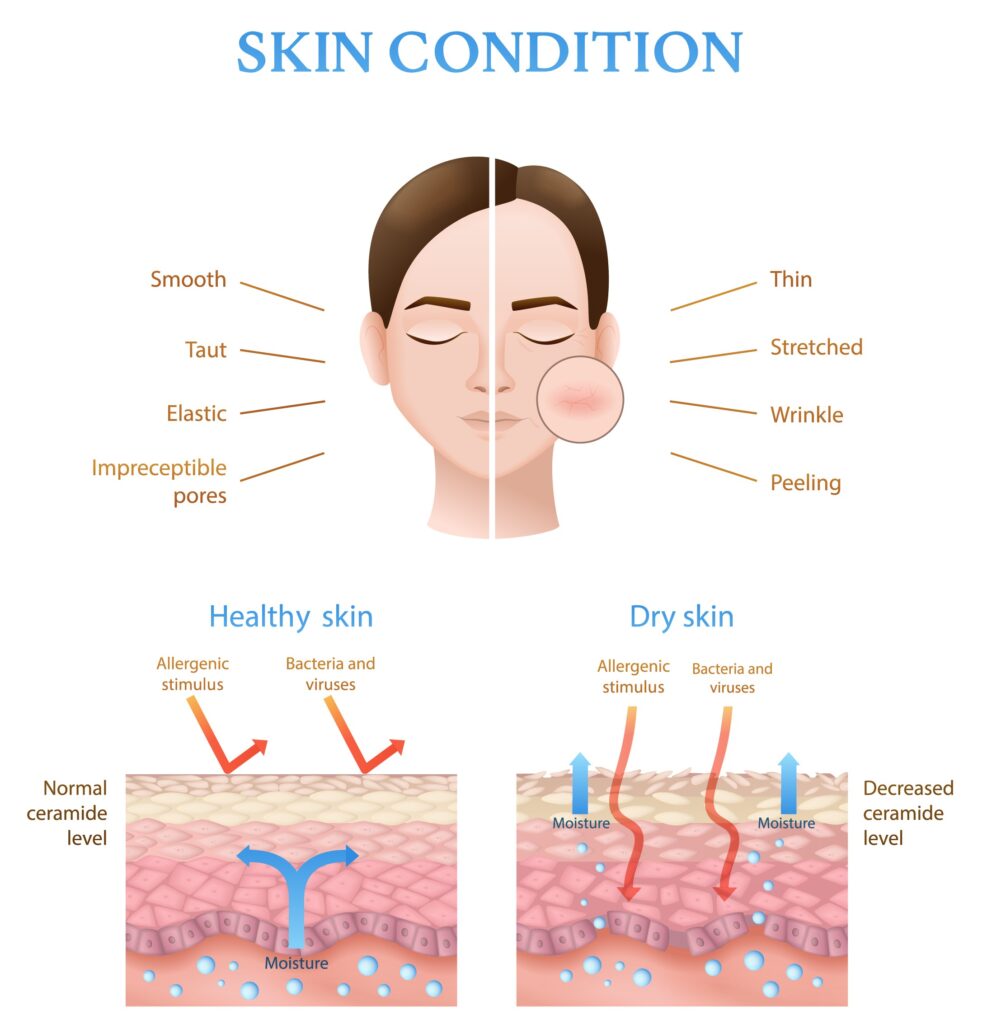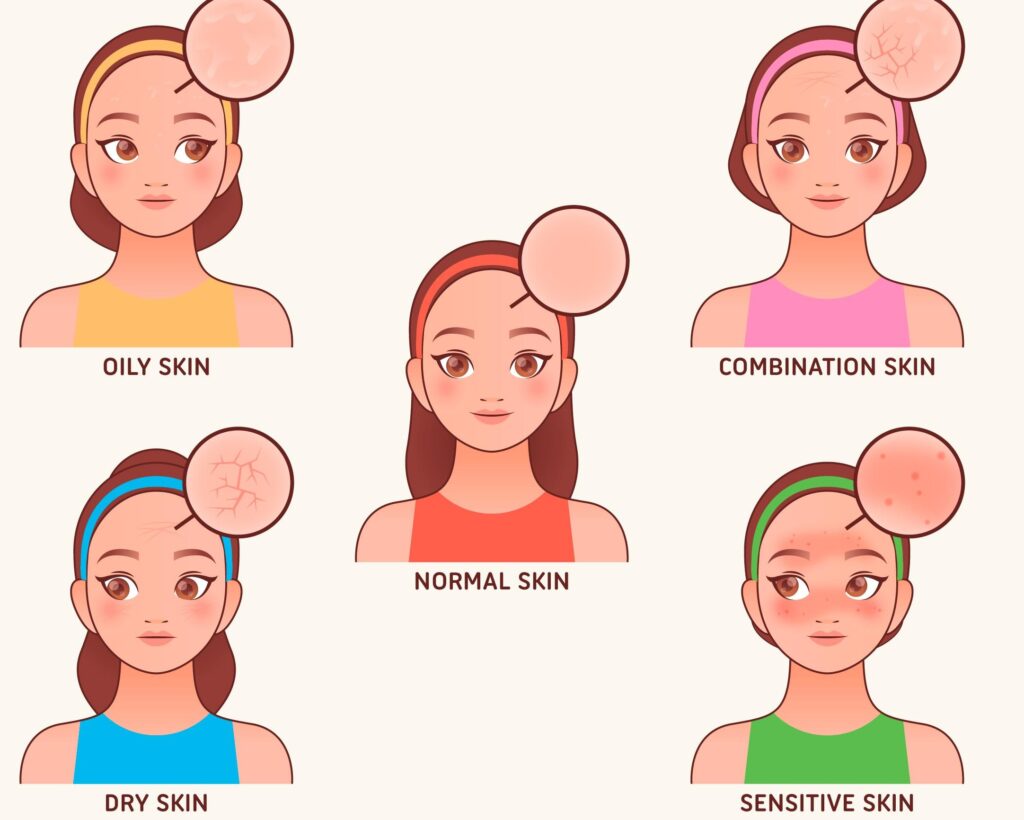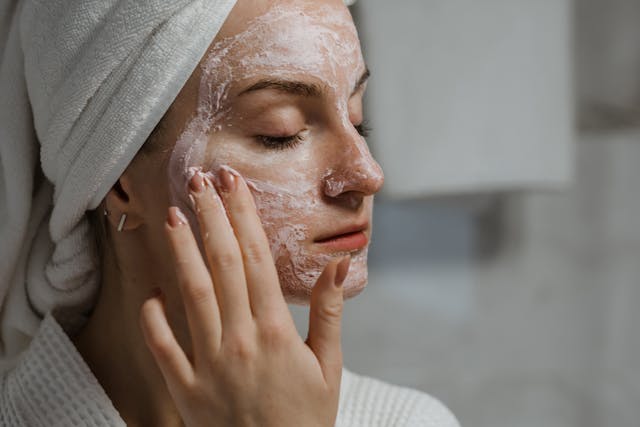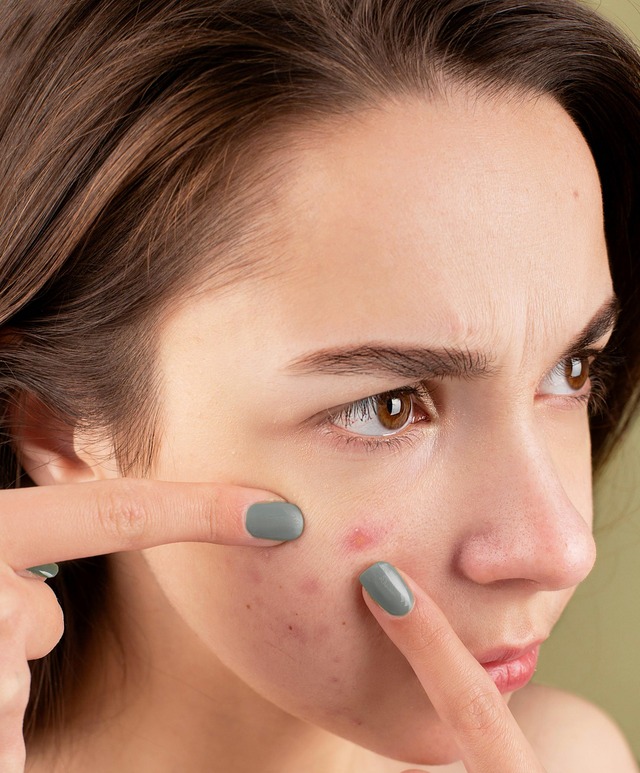Introduction
How to determine your skin type? At first glance, it seems like an easy question, one of those things that you seem obligated to know and has a simple answer. But surely you have asked yourself that question more than once, looking closely in the mirror, hoping to find an answer, as if it were Snow White’s magic mirror. And the answer is not so clear. Determining your skin type is not always easy since each skin is a world and it changes over time.
Why is it important for you to determine your skin type?

The skin is the largest organ in our body and protects us from external elements. Each person has unique skin with its own needs and characteristics, which means it’s essential to identify one’s skin type. Knowing one’s skin type helps determine the best products and treatments to maintain healthy, beautiful skin.
Many people aren’t sure how to properly care for their skin or even what their skin type is. This can be especially problematic when it comes to purchasing skin care products, as not all products work for all skin types. If you use the wrong product for your skin type, it can worsen existing problems or even create new problems.
Classification Of Skin Type
Different criteria can be used to classify the skin. Starting from the epidermis, we find that there is thick or thin skin, while the dermis determines whether the skin is tonic or flaccid. Another classification is based on the characteristics of the hydrolipidic mantle, which is formed by the watery secretion produced by the sweat glands and the natural lipids found in the sebaceous glands of the skin. This emulsion creates a film that covers the skin, allowing it to maintain its barrier function and giving rise to the following different skin types
- Normal skin
- Dry Skin
- Oily Skin
- Mixed Skin
- Sensitive skin

Normal Skin
It is skin that generally has a uniform color, is soft to the touch, has a smooth appearance, and is well hydrated. It is easier for children to have this type of skin since they are less exposed to environmental damage that damages the face over time. Determining if you have normal skin is relatively easy, as it doesn’t present significant issues like dryness or oiliness.
Normal skin is probably the easiest to treat, as it does not need special care. However, you don’t have to be too careless, because although it doesn’t need as much care as others. It is advisable not to neglect it so that it remains healthy and does not present damage since it generally tends to become dry.
Normal skin requires toning and cleansing, as well as applying moisturizing cream day and night to protect and hydrate the epidermis. One should use a rich but easily absorbed lotion cream that softens the feel of the skin, deeply hydrates, and soothes extremely dry skin. Although normal skin does not present any particular problem, it is essential to have specific care to avoid damage due to external factors such as sun exposure or natural aging.

Dry Skin
Dry skin is characterized by a lack of moisture and natural oils. It often feels tight, scaly, and rough and may even present peeling and redness. Additionally, dry skin is more prone to wrinkles, fine lines, and irritation. If you’re trying to identify your skin type and notice these symptoms, you likely have dry skin.
There are several reasons why someone may have dry skin. One may be genetics: one person’s skin may naturally produce fewer oils than others. Another reason may be the weather, as cold, dry air can strip the skin of its natural moisture. There are also factors such as age, diet, sun exposure, and certain chemicals that can contribute to dry skin.
To treat this type of skin, experts recommend good hydration with moisturizing creams. These cosmetics contain essential fatty acids and antioxidant substances that help restore dry skin’s natural moisture to increase its flexibility. Its continued application reduces the rough appearance and creates a protective barrier.
It’s also important to avoid certain products that can aggravate dryness, such as products that contain alcohol and strong fragrances. Additionally, it is necessary to protect the skin from the sun by using an appropriate sunscreen, as excessive sun exposure can increase dryness and premature aging of the skin.
Oily Skin

It is a skin that presents greater activity in the sebaceous glands in an irregular manner; which extends across the skin of the human body, except on the palms of the hands and feet. Its size varies depending on its location, If you’re wondering how to determine your skin type, pay attention to whether your skin feels greasy, especially in the T-zone (forehead, nose, and chin).
In addition, pores tend to be larger and more visible, and acne and blackheads are common. It is also common for the skin to feel greasy to the touch. The causes of oily skin can vary, but some of the most common include hormonal changes, genetics, the use of certain skin care products, hot and humid weather, stress, and an unhealthy diet.
To care for oily skin, it is essential to use gentle products free of fragrances and other irritating ingredients. It is advisable to choose specific cosmetics for sensitive skin, containing soothing ingredients such as aloe vera, chamomile, or calendula. Additionally, it is important to avoid prolonged sun exposure and always use sun protection, as UV rays can increase skin sensitivity.
Mixed Skin
As the word itself says, this type of skin is between normal skin and oily skin. The oiliest area usually corresponds to the T zone (forehead, nose, and chin), while on the cheeks the skin is normal or dry. Determining your skin type as mixed skin can be tricky, as it requires balancing hydration and oil control.
Many experts agree that this type of skin is the most difficult to care for due to its mix of characteristics. It is necessary to achieve correct hydration and at the same time not generate sebum and treat the areas separately, so as not to mix them. It is advisable to perform an exfoliation and nourishing mask once a week. But to avoid too many exfoliating products that can irritate the skin and worsen sebum production.
Sensitive skin

Sensitive skin reacts more to external media such as stress, dry air from heating, strong winds, or ultraviolet light. You may have sensitive skin if you’re trying to identify your skin type and notice frequent redness, itching, or irritation.
Sensitive skin can also contribute to dry skin, blemishes, acne, and blackheads. It may experience sensations of itching, redness, burning, dryness, and peeling more easily than others. In addition, this type of skin is usually more prone to developing irritations, allergies, and eczema.
To care for sensitive skin, it is essential to use gentle products free of fragrances and other irritating ingredients. It is advisable to choose specific cosmetics for sensitive skin, containing soothing ingredients such as aloe vera, chamomile or calendula. Additionally, it is important to avoid prolonged sun exposure and always use sun protection, as UV rays can increase skin sensitivity.
How to Determine Your Skin Type
If you’re still unsure how to identify your skin type, here’s a simple step-by-step guide:
Cleanse Your Face: Use a gentle cleanser to remove dirt and makeup.
Wait an Hour: Don’t apply any products and observe how your skin feels.
Check for Oiliness or Dryness:
If your skin feels tight or flaky, you likely have dry skin.
If your T-zone is oily but your cheeks are normal, you have combination skin.
If your entire face feels greasy, you have oily skin.
If your skin feels balanced and comfortable, you have normal skin.
Test for Sensitivity: If your skin reacts easily to products or environmental factors, you may have sensitive skin.
FAQs About Skin Types
-
What are the different skin types?
-
The five main skin types are normal, dry, oily, combination, and sensitive.
-
-
How do I identify my skin type?
-
Follow the step-by-step guide above to determine your skin type at home.
-
-
How do I know if my skin type is sensitive?
-
Sensitive skin often reacts with redness, itching, or irritation when exposed to certain products or environmental factors.
-
Conclusion
Knowing your skin type is crucial for effective skincare. Whether you have normal, dry, oily, combination, or sensitive skin, each type requires specific products and treatments to stay healthy and radiant.
By identifying your skin type, you can choose tailored skincare solutions that address its unique needs and avoid common issues like dryness, oiliness, or sensitivity. Taking proactive steps to care for your skin ensures it remains in optimal condition, promoting a clear and balanced complexion over time.


